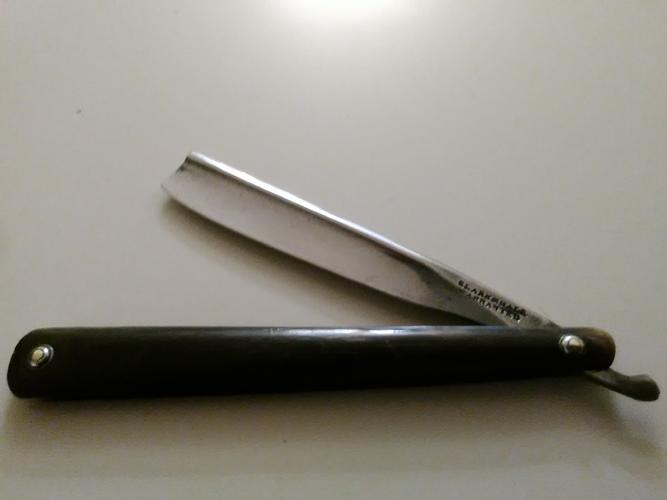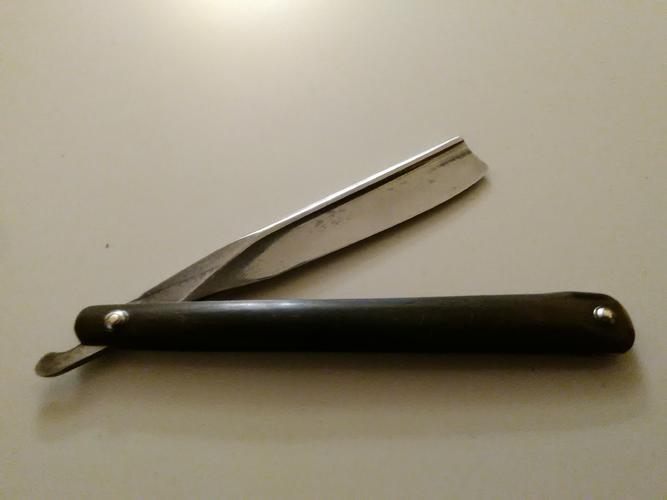Results 1 to 10 of 30
Thread: Clark & Hall
Hybrid View
-
11-12-2018, 09:33 PM #1
 Clark & Hall
Clark & Hall


This is a vintage Clark & Hall razor made in Sheffield between 1797 and 1823.
I got it from a collection of Civil War memorabilia.
It is in pretty remarkable shape for its age.
The scales, collars and pins appear to be original.
Just did a little polishing and cleaning.
Honed on Shapton Glass 1k, 5k, 8k and finished on an Escher. Took a beautiful edge.
Looking forward to the test shave in the a.m.
Pete <:-}"Life is short, Break the Rules. Forgive quickly, Kiss Slowly,
Love truly, Laugh uncontrollably, And never regret ANYTHING
That makes you smile." - Mark Twain
-
11-12-2018, 10:13 PM #2

Looks great, Pete! Betcha it has never been so sharp!
 "Don't be stubborn. You are missing out."
"Don't be stubborn. You are missing out."
I rest my case.
-
The Following User Says Thank You to sharptonn For This Useful Post:
petercp4e (11-12-2018)
-
11-12-2018, 10:50 PM #3
-
11-13-2018, 02:05 AM #4

Looking forward to seeing how the shave goes. I see lots rave about them.....once!

I think the later advances in blade design are more important than the steel. Just me.
Shave like a Great, great, great, great grandfather? It's in fine condition."Don't be stubborn. You are missing out."
I rest my case.
-
The Following User Says Thank You to sharptonn For This Useful Post:
petercp4e (11-13-2018)
-
11-13-2018, 02:14 AM #5

What a beauty! Please give us an updated report after your shave.
Richard
-
The Following User Says Thank You to evnpar For This Useful Post:
petercp4e (11-13-2018)
-
11-13-2018, 11:28 PM #6

The Shave Report
First thing I noticed is the blade appears very long. I think it's because there isn't a transition from wide blade to narrow tang. Didn't present any problem.
The bottom of the tang where your thumb rests is very narrow. I have a Maestro Living razor that's like that so I'm used to the feeling. No problem.
The stub tail is really stubby but hooks onto your finger just enough to let you know that it's there.
The razor is well balanced and handled easily.
If you look closely, the blade's edge is smiling from around the midpoint to the toe. This was very cool and made shaving in the hollows and valleys super easy. I kinda compare it to my R. Saito's ease of handling the curves.
With the combo of Sheffield Steel and an Escher finish, the three pass shave was super comfortable. BBS for sure. It's right up there with my top dogs.
Shaving with a razor that old, with so much history puts the cool factor off the charts.
Me likey...
Pete <:-}"Life is short, Break the Rules. Forgive quickly, Kiss Slowly,
Love truly, Laugh uncontrollably, And never regret ANYTHING
That makes you smile." - Mark Twain
-


 120Likes
120Likes LinkBack URL
LinkBack URL About LinkBacks
About LinkBacks







 Reply With Quote
Reply With Quote


